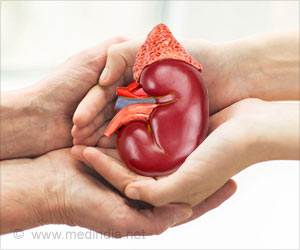.
Long COVID is a potentially disabling syndrome affecting an estimated 10-15% of subjects who survive COVID-19.
Researchers propose that SARS-CoV-2-mediated vagus nerve dysfunction (VND) could explain some long COVID symptoms, including dysphonia (persistent voice problems), dysphagia (difficulty in swallowing), dizziness, tachycardia (abnormally high heart rate), orthostatic hypotension (low blood pressure), and diarrhea.
To know extensively about the morphological and functional evaluation of the vagus nerve, researchers performed a pilot study using imaging and functional tests in long COVID subjects with symptoms suggestive of VND.
In the total of 348 patients, 228 (66%) had at least one symptom suggestive of VND. The current evaluation was performed in the first 22 subjects with VND symptoms (10% of the total) seen. The study is ongoing and continues to recruit patients.
Of the 22 subjects analyzed, 20 (91%) were women with a median age of 44 years. The most frequent VND-related symptoms were: diarrhea (73%), tachycardia (59%), dizziness, dysphagia and dysphonia (45% each), and orthostatic hypotension (14%).
Almost all (19 subjects, 86%) had at least 3 VND-related symptoms. The median prior duration of symptoms was 14 months.
Six of 22 patients (27%) displayed alteration of the vagus nerve in the neck shown by ultrasound, including both thickening of the nerve and increased ‘echogenicity’ which indicates mild inflammatory reactive changes.
A thoracic ultrasound showed flattened ‘diaphragmatic curves’ in 10 out of 22 (46%) subjects (which translates to a decrease in diaphragmatic mobility during breathing, or more simply abnormal breathing).
A total of 10 of 16 (63%) assessed individuals showed reduced maximum inspiration pressures, showing the weakness of breathing muscles.
Eating and digestive function were also affected in some patients, with 13 of 18 assessed (72%) having a positive screen for self-perceived oropharyngeal dysphagia (trouble swallowing).
An assessment of gastric and bowel function performed in 19 patients revealed 8 (42%) had their ability to deliver food to the stomach (via the esophagus) impaired, with 2 of these 8 (25%) reporting difficulty in swallowing.
Gastroesophageal reflux (acid reflux) was observed in 9 of 19 (47%) individuals; with 4 of these 9 (44%) again having difficulty delivering food to the stomach and 3 of these 9 (33%) with hiatal hernia – which occurs when the upper part of the stomach bulges through the diaphragm into the chest cavity.
A Voice Handicap Index 30 test (a standard way to measure voice function) was abnormal in 8/17 (47%) cases, with 7 of these 8 cases (88%) suffering dysphonia.
These findings so far point at vagus nerve dysfunction as a central pathophysiological feature of long COVID-19.
Source: Medindia



